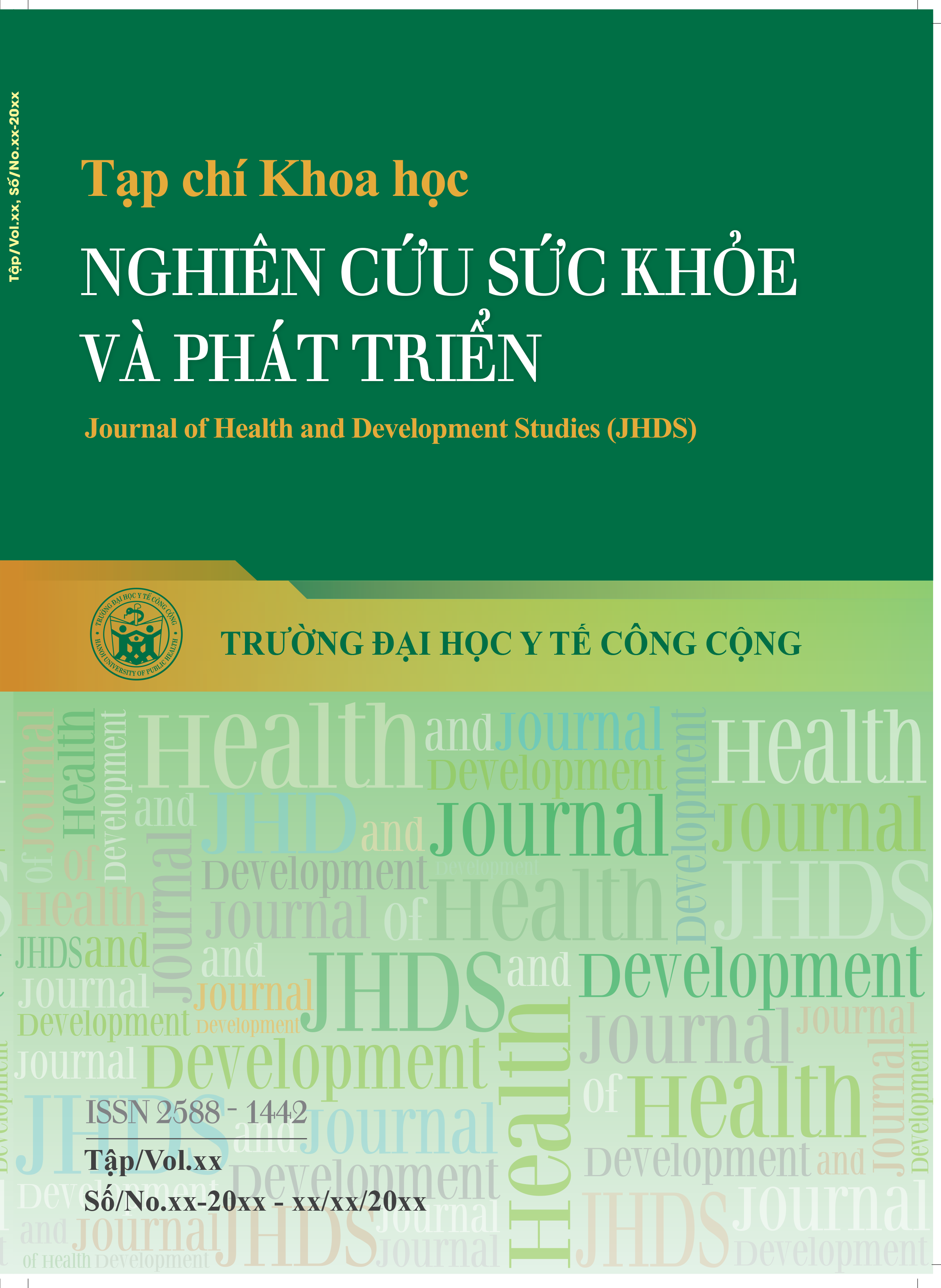Tạp chí
Khoa học Nghiên cứu Sức khỏe và Phát triển
(Journal of Health and Development Studies – JHDS)
Trường Đại học Y tế công cộng
ISSN (Print): 2588-1442
ISSN (Online): XXXX-XXXX
https://jhds.edu.vn
Key breeding sites of Aedes mosquitoes in Huaylau village, Pakse city, Champasack province, Lao People Democratic Republic 2019
- Mã bài báo : SKPT_20_101
- Ngày xuất bản : 26/03/2021
- Số trang : 52-61
- Tác giả : Le Thi Thanh Huong
- Lượt xem : ( 875 )
Danh sách tác giả (*)
- Le Thi Thanh Huong 1 - Hanoi University of Public Health
- Nguyen Quynh Anh 1 - Hanoi University of Public Health
- Vanhnasack Saenthavisouk 2 - College of Health Sciences Champasack, Lao PDR
- Vu Sinh Nam 3 - National Institute of Hygiene and Epidemiology, Vietnam
Objectives: The elimination of key breeding sites of dengue vector is applied worldwide to control the vector density under the critical epidemic threshold. This study aimed to identify key breeding sites of Aedes mosquitos and associated factors in Huaylau village, Pakse city, Champasack province in Laos in 2019.
Methods: This was a cross-sectional study, combining of immature stage survey of Aedes mosquitoes in all water and discarded containers and the community’s knowledge and practices on the prevention of dengue fever in all 240 households in Huaylau village. Multivariate logistic regression was applied to identify factors associated with the absence of Aedes larvae and pupae in the village. Statistical significance was set at a p-value less than 0.05.
Results: Among the 720 water and discarded containers surveyed, the study found 654 Aedes larvae and pupae; of which 94.6% were immature Aedes aegypti. Key breeding sites of Aedes aegypti included water jars (34.2%), plastic drums (30.7%), tanks < 500 litter (14.7%), and discarded containers (12.6%), while that of all Aedes albopictus was discarded containers. The community’s better practices on the prevention of dengue fever contributed to the increased odds of the absence of Aedes larvae ad pupae by 1.612 (95%CI: 1.218-2.134, p<0.01), and the cleanliness of the house were associated with the increased odds of 4.072 of the absent Aedes larvae and pupae in the participated households (95%CI: 1.589-10.434, p<0.01).
Conclusions: Aedes aegypti mosquitoes in the Huaylau village laid their eggs in various breeding sites, including water containers and discarded containers while discarded containers were the only key breeding site of Aedes albopictus. Better practices on dengue prevention and better hygiene conditions of the houses contributed to the absence of Aedes larvae and pupae. Special attention should be paid to the clearance of all discarded containers and education of the community people to cover water containers in the village.
- DOI : https://doi.org/10.38148/JHDS.0502SKPT20-080
- Chủ đề :
- Loại bài báo : Nghiên cứu gốc
- Chuyên nghành : Chuyên Ngành Y
 Thông tin liên hệ : Nguyen Quynh Anh
Thông tin liên hệ : Nguyen Quynh Anh Email : nqa1@huph.edu.vn
Email : nqa1@huph.edu.vn  Địa chỉ : Hanoi University of Public Health
Địa chỉ : Hanoi University of Public Health
Bài báo liên quan
- The prevalence of stress-related covid19 quarantine among secondary-and-highschool students in northern Vietnam
- The relationship between T-CD4 recovery and HIV disclosure status among HIV-infected patients on first-line antiretroviral therapy at the Hospital for Tropical Diseases in Ho Chi Minh City
- The cost of HIV testing at five district health facilities intervented poct model to confirmation HIV detected
- Commentary: A Significant Transition of Mode of Teaching and Studying to meet the Covid-19 challenges in an university in Vietnam
- Information searching behaviors among Vietnamese students during first wave of the COVID-19 pandemic
- Health care seeking behaviuor among the elderly in Hue City
- Key breeding sites of Aedes mosquitoes in Huaylau village, Pakse city, Champasack province, Lao People Democratic Republic 2019
- Cost-effectiveness of interventions for people with dementia without caregiver: A Systematic Review
- Sleep quality among youngster in Danang city, Vietnam: A cross-sectional study
- Job demand and control among clinical nurses in a provincial hospital and related factors: Results from a cross-sectional study in 2020.
- The association between smoking status and tobacco outlets density and proximity: A cross-sectional study with geographical data from CHILILAB, 2016
Bài viết mới nhất
- Một số trang web hữu ích đối với các nhà khoa học
- Dành cho chuyên gia
- Tạp chí Khoa học Nghiên cứu sức khỏe và Phát triển duyệt tối đa 1,0 điểm ngành Y trong Danh mục Tạp chí khoa học được tính điểm của Hội đồng giáo sư Nhà nước
- CHÚC MỪNG NGÀY BÁO CHÍ CÁCH MẠNG VIỆT NAM (21/6)
- GS.TS Hoàng Văn Minh - Hiệu trưởng Nhà trường 'lọt top' nhà khoa học có chỉ số trích dẫn hàng đầu thế giới

 File toàn văn
File toàn văn